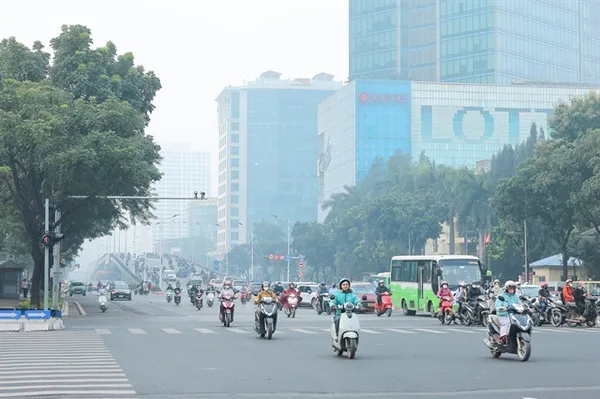 Life & Style
Life & Style

Hanoian audience have recently had a chance to watch fashion show featuring traditional costumes of Japanese and Vietnamese women, the kimono and áo dài.
Việt Nam News reporter Lê Hương talks to popular Japanese designer Kobayashi Eiko, Executive Director of Be-Japon, which co-hosted the show together with Japan Embassy in Việt Nam and BRG group. The designer herself presented dozens of items including some original royal ones created more than 100 years ago.
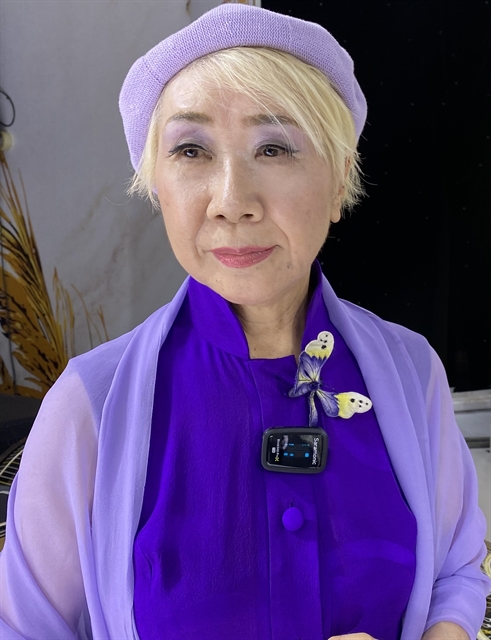 |
| Japanese designer Kobayashi Eiko. VNS Photo Lê Hương |
- What’s your feeling after the show?
- When we made the rehearsal, I felt nervous. But now when seeing how the audience applause and cheered during the show, I feel so happy and no longer tense.
It’s my great honour to make a contribution to this show to celebrate the 50th anniversary of relationship between the 2 countries. This is our very valuable experience to offer a chance to highlight the cultural exchange between the two countries through fashion.
- What made the show so special?
- Well, I introduce many royal costumes of Japanese dynasties in the past. There are some sets that were made over 150 years ago, which we have spared no efforts to preserve. After this show, we will transfer them to museums.
There are some costumes with patterns of Kano painting school. The kimono sets are richly decorated as if they contained the whole world. These kimono sets were possessed by wealthy families of sumo fighters or traders.
There are also my modified items inspired from patterns of ancient kimono designs.
I often try to improve my kimono designs so that they can come along with various accessories like big necklaces, high-heeled shoes and stylised hats.
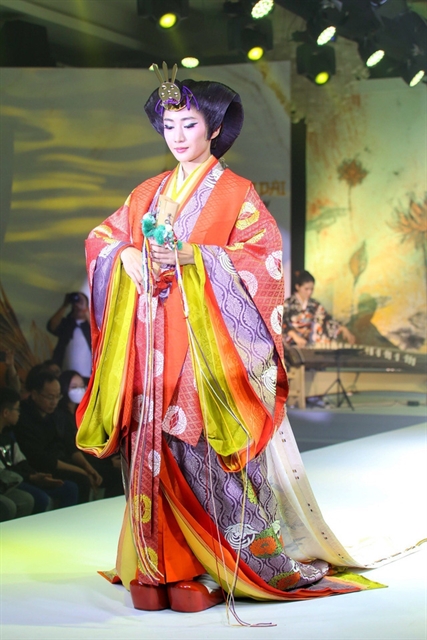 |
| An ancient kimono at the show. VNA/VNS Photo |
- What about áo dài designs at the show?
- As many as 6 áo dài designs were made from ancient Japanese materials used for kimono like silk dated back to Meiji era, Taisho era and rare Tatero fabric. The pants for áo dài sets were made from traditional Vietnamese silk.
Some cloths for áo dài in this show were hand drawn by well experienced Japanese artisans.
I spent much time to think of how to use ancient cloth for making kimono to make áo dài. To find the kimono fabric that has suitable thinness to make áo dài is also a matter during the process.
During the research process, I found out that kimono and áo dài share some things in common: both are long and help enhance the gentle, elegance of Asian women; both use soft silk materials; and both use hand-embroidered details to decorate.
I hope my innovation with áo dài using ancient kimono fabrics is a way to preserve ancient kimono, which embodies master techniques of artisans in the past.
I think my mission is inspiring audience and bring along positive feelings for them.
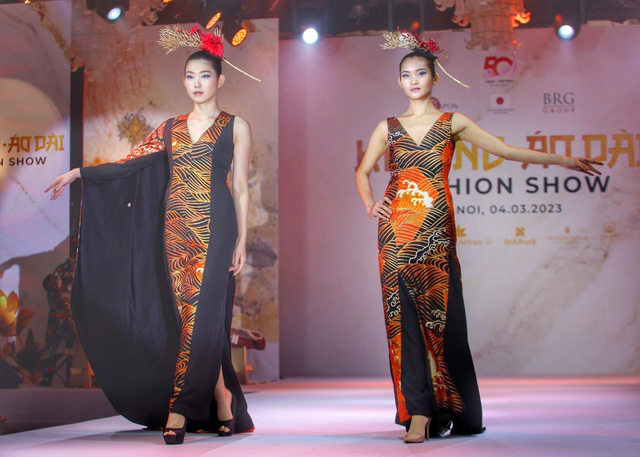 |
| Some áo dài designs at the show. VNA/VNS Photo |
- What do you think about the possibility to commercialise your collection?
- I hope more and more people can wear my designs. I have been thinking of selling my products.
- What do you think about joining hands to keep cultural heritage like kimono and áo dài?
- I think in this process, not only non-profit organisation like Be-Japon but also investors and enterprises should join hands in.
Preservation requires many people sharing the same target. For example, we can organise meeting and experience sharing for artisans in Japan and Việt Nam so that they can learn from one another.
- How do you think ancient costumes like kimono and áo dài should be kept in modern society?
- We should make them more casual. Like áo dài should be shorter, with smaller pant legs while kimono can be designed as a robe or a coat so that the wearers find convenient.
- Do you think you will continue your innovation with áo dài?
- Now I don’t have any idea yet. But I don’t want to stop here. I guess there will be other projects for me to be creative with áo dài. VNS
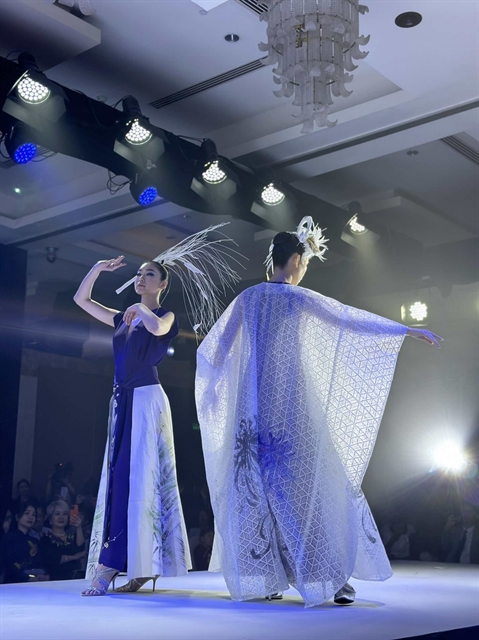 |
| Designs made of over-100-year-old kimono fabric that survived the tsunami in March 2011. VNA/VNS Photo |



